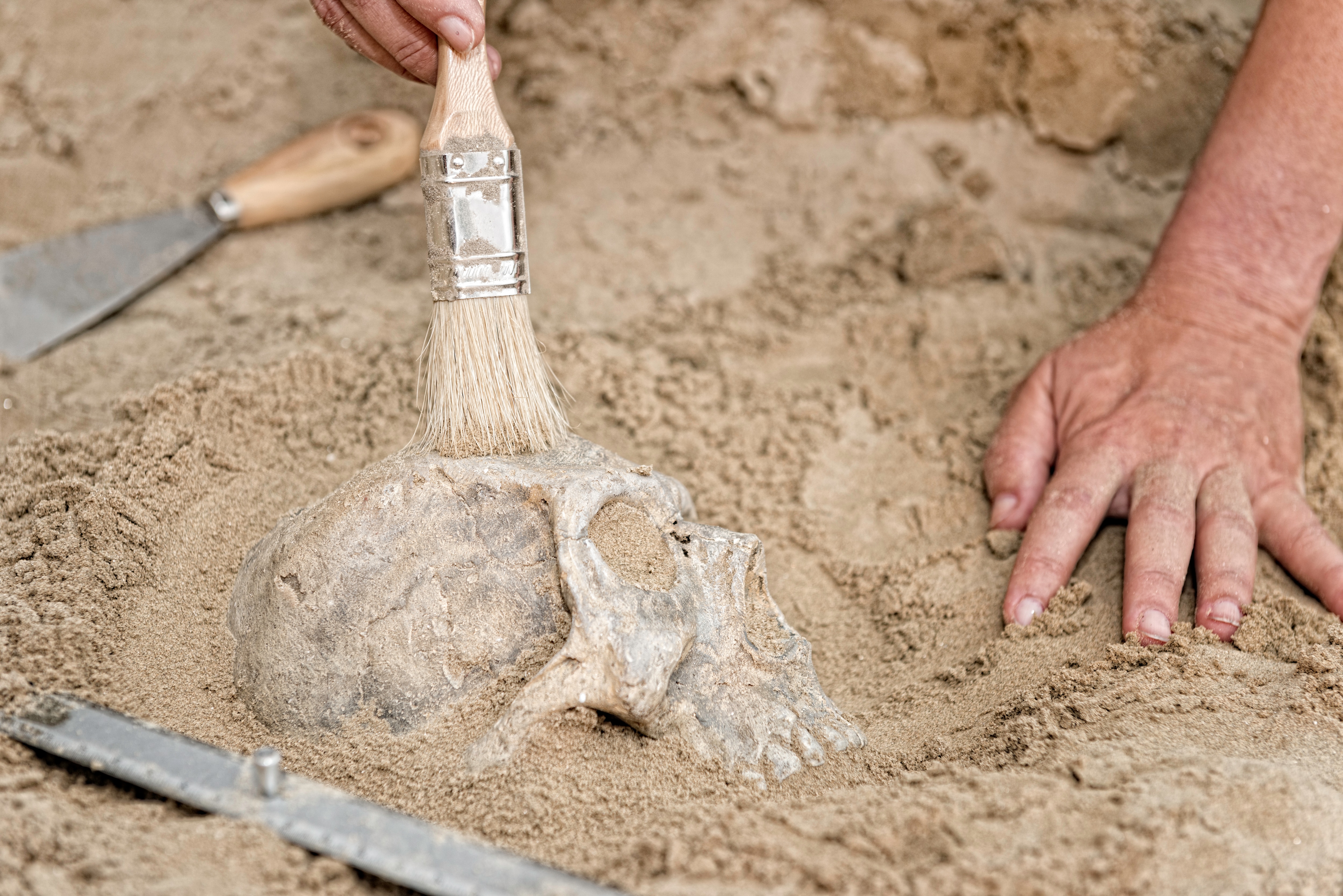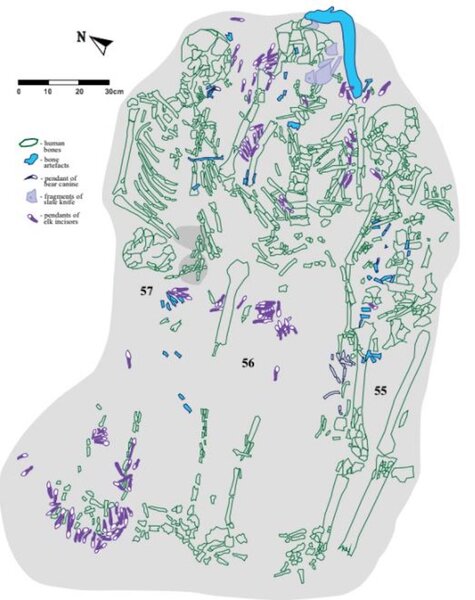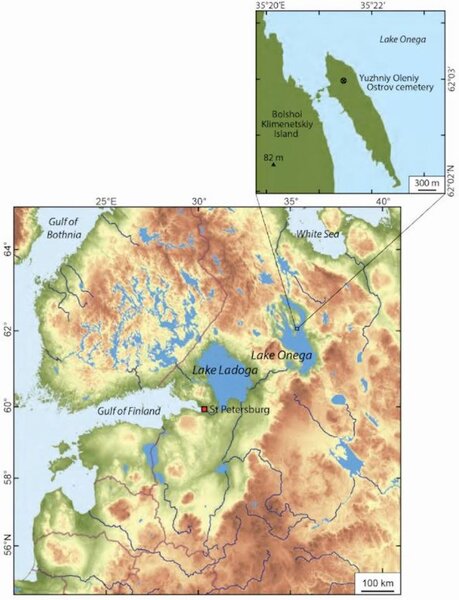Create a free profile to get unlimited access to exclusive videos, sweepstakes, and more!
8,000 years ago, global cooling brought people together to create a mass grave
They say death brings us together; in the case of our ancestors, it was literally true.

A large communal gravesite first discovered in the 1930s is providing new insight into the behavior of our early Holocene ancestors, after a new round of radiocarbon dating.
The gravesite, located near Lake Onega roughly 500 miles north of modern-day Moscow, contains approximately 400 bodies hailing from a number of disparate but typically nomadic groups who lived some 8,000 years ago.
The previous estimates about its age and longevity were drawn largely because of the cemetery’s size and the inherent challenges of dating bones, particularly of early Holocene humans. The new analysis was completed by Rick Schulting from the School of Archaeology at the University of Oxford, and colleagues. The findings were published in the journal Nature Ecology & Evolution.
“Northern hunter gatherers tend to have a lot of fish in their diets,” Schulting told SYFY WIRE. “Fish impart something we call the reservoir effect to radiocarbon dates. The carbon in the fish is actually older than the carbon in the atmosphere.”
The reservoir effect is a result of dissolved carbon in water which is then taken up by fish and ultimately people. While carbon in the air is constantly circulated throughout the atmosphere, when carbon is taken up in water it stays and ages. As a result, the radiocarbon date of a fish caught today might make it appear as though it were several hundred years old, or older.
The team was able to correct for the reservoir effect by taking into account animal bones which were buried alongside humans as grave offerings. Correcting for the reservoir effect allowed scientists to narrow the range of dates for which the cemetery was in use, down from nearly a thousand years to somewhere between one and three centuries. Moreover, they found that the date range was nicely explained by a significant cooling event which occurred approximately 8.2 thousand years ago, and the changes in group behavior as a result of a changing climate.
Groups of hunter gatherers would have been spread out across the region prior to the cooling, taking resources from a group of nearby lakes. As the climate cooled, the amount of oxygen available in lake ecosystems decreases resulting in a phenomenon known as winter fish kill. Because of its large size, Lake Onega would have been less affected by the cooling and groups of people were pushed toward it.
The creation and use of the communal cemetery wasn’t just a logistical result of a larger group of people in a confined area, instead it appears to have served a social purpose indicating peace and cooperation among the groups living around the lake.
“We’ve found that who gets buried in a cemetery tends to define the rights of a community to use surrounding resources. One of the ideas is who gets buried here helps define who gets to use the resources around the lake, at a time when the resources are stressed regionally,” Schulting said.
The groups represented by the bodies in the cemetery likely continued to live separately for the most part, but by burying their dead together, they communicated to one another an intention to share the same space and resources without conflict. This communal relationship would, however, dissolve once the climate returned to more favorable conditions.
“Hunter gatherers can be quite fiercely independent and the complexity of having to negotiate access when you want to drop a fishing line might have started to grate on people,” Schulting said. “When they really needed that lake and they wanted to avoid tensions they sort of bought into the system. When the tension lifted, they all went off in their own directions.”
The existence of the cemetery is evidence of humanity’s willingness to work together in times of need, even at a time when the culture of our species might have looked drastically different. If there is one universal experience it is death and the mourning of loved ones lost. Honoring that experience, it seems, was enough to bring our ancestors together both in death and in life.




























